In March 2001, the Taliban, an extreme interpretation of Islam that prohibits idolatry, blew up the Great Buddha at Bamiyan, a world-class Buddhist site.

Also in January 2015, the headquarters of the satirical magazine Charriebd (Paris), which published caricatures of Muhammad, was attacked by young men from immigrant families influenced by Islamic extremists, who killed 12 people, including the caricaturist.
The latter may be because “he insulted Muhammad,” but it is obvious that both are because they both touch on the prohibition of idolatry, which is central to the teachings of Judaism and Islam.
Especially living in a polytheistic climate like Japan, it is difficult to understand why Islam is so hostile to idolatry (or even polytheism).
Art classes are also restricted in Muslim countries. This is because arts and crafts using paper and clay are considered to lead to idolatry.
Anyway, this doctrine of prohibition of idolatry is actually not just a question of “Is it wrong to make a statue of God?” but actually involves the fundamental question of “What is faith?
I believe that by clarifying this fundamental issue, and by looking at idolatry and polytheism in reverse, we can create a foundation that will allow Islam (Semitic monotheism) and other religions to coexist.
In this paper, I would like to consider why idolatry is considered wrong in the context of Judaism, Christianity, and Islam, in short, Semitic monotheism (the religion of Abraham), as well as some suggestions on how we should think about idolatry and polytheism in the future.
Exploring the Roots of Monotheism and Polytheism
Polytheism is the idea of “moving God for man’s convenience
In all civilizations, both ancient and modern, there is a tendency to create “idols” in the form of sculptures, paintings, and the like. So, it is fair to say that “polytheism” is at the root of idolatry.
Therefore, in order to consider the question of why idolatry is prohibited, we must first contemplate polytheism.
When we think about polytheism, i.e., “why are there so many gods?” it is safe to say that “as many gods were established as the number of wishes and desires of the people.
Of course, I believe that the beginning of the practice was to entrust the mystery and awe of various natural phenomena to divine beings, but at the same time, such sentiments as “a wish for a good harvest” and “a wish for fertility” were also projected as wishes to the gods.
So, I think it is safe to say that the order is still the following
- People have wishes and desires
- and the gods are created according to the number and type of those wishes and desires
To put it simply, “people expect God to answer their desires,” and to put it a little more harshly, the scheme is (in the structure of the idea) “to move God according to human convenience.
Even if the nature of our thoughts about the gods is reverence, respect, awe, and gratitude, the reason why we have such thoughts is that the gods grant our wishes.
For example, in ancient wars, if a god was worshipped but lost the war, he would gradually lose his divine status.
So, again, the structure of the idea is that it is “moving God for the convenience of man”, which can be more simply schematized as follows.
Man > God
The only final importance is that human needs, not God’s needs, take precedence.
Here we can say that there is a human-centered worldview, an “ego-centered worldview. Idolatry is the very symbol of this ego-centered worldview.
Ancient Judaism – Copernican Turn to a God-centered Worldview
However, an unusual religion emerged in the ancient region of Palestine. Judaism.
Judaism is of course well known as a monotheistic religion, but it went through several stages before it became a monotheistic religion in the strict sense. The first stage is better described as “the religion of ancient Israel.
The innovation that Judaism, or the Jewish people, has brought to humanity is, in conclusion, a God-centered worldview.
If one believes in a god but, to put it bluntly, “no benefits” come from it, it is normal for one’s faith in that god to wane.
However, it is fair to say that the Jewish people, despite their belief in Yahweh, had a series of disappointments, with the exception of a period of success in the Exodus and the prosperity of David and Solomon.
Nevertheless, they did not abandon Yahveh, but came to the thought that “it was not God’s fault, but ours for not keeping the covenant.
Of course, they did not consistently hold such beliefs, and the Jewish people have been quite unfaithful.
At the time of the Exodus, the Hebrews made an idol of the “golden calf” and began to worship it, despite Moses’ strict instructions to them.
They also often shifted their feelings to Baal, the Canaanite god of fertility.
Then the Israelites did evil in the eyes of the Lord and served the Baals. They forsook the Lord, the God of their ancestors, who had brought them out of Egypt. They followed and worshiped various gods of the peoples around them. They aroused the Lord’s anger (Judges 2:11-12)
In response, the prophet Elijah had a “psychic confrontation” with the priests of Baal on Mount Carmel to defend Yahveh’s superiority.
Incidentally, the section of the Ten Commandments of Moses that is directly related to this theme is the second of the Ten Commandments.
“You shall not make for yourself an image in the form of anything in heaven above or on the earth beneath or in the waters below. You shall not bow down to them or worship them; for I, the Lord your God, am a jealous God, punishing the children for the sin of the parents to the third and fourth generation of those who hate me,(Exodus 20:4-5)
And this second commandment is closely grounded in the preceding first.
And God spoke all these words:
“I am the Lord your God, who brought you out of Egypt, out of the land of slavery.
“You shall have no other gods before[a] me.(Exodus 20:1-3)
It is structured exactly as follows
- First Commandment: Declaration of a “God-centered worldview
- The Second Commandment: Warning against the “ego-centered worldview
And in addition, there is a 3rd Commandment as a reinforcement of these.
“You shall not misuse the name of the Lord your God, for the Lord will not hold anyone guiltless who misuses his name.(Exodus 20:7)
This 3rd Commandment is discussed in a separate section. It is actually exactly the same as the theme of this issue, so please refer to it if you would like to know more.
*Reference article: Why is it that “Thou shalt not recite the name of the Lord in vain” (the Ten Commandments)?
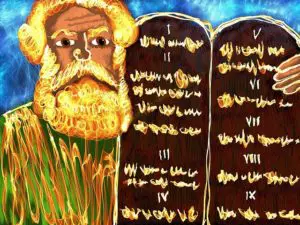
Now, these three commandments are, so to speak, the “Declaration of the One and Only God.
Hence, idolatry is a violation of this and is seen as rebellion against the one and only God.
King Josiah, king of Judah and religious reformer, is said to have smashed idols to pieces to purify Judah and Jerusalem.
This is the “God-centered worldview,” the idea that “it is not God’s fault, but our fault for not keeping the covenant.
It means that the world and human beings exist for the convenience of God, not for the convenience of human beings.
This “monotheism” and its accompanying “God-centered worldview” is the greatest contribution that the Jewish people have made to world history.
In fact, Christianity and Islam, which are based on Judaism, are two of the world’s three major religions, and of the world’s total population of 6.7 billion people, Christians are said to account for about 33% and Islam for 20%, which means that these two religions account for more than half of the world’s population.
Difference between veneration of holy images and idolatry in Christianity
Christianity, derived from Judaism, of course also prohibits idolatry.
However, from a layman’s point of view, there are crucifixion statues of Jesus and Mary in Christian churches and icons in Orthodox churches, which makes you wonder if they are not idolatry.
And the strangeness is still somewhat true, and has developed into a major problem in the history of Christianity. It is the so-called iconoclasm (the movement to destroy sacred images).
The Byzantine emperor, Leo III, suddenly issued a ban on sacred images.
The reason for this is that the Byzantine Empire was geographically adjacent to the Islamic Empire, and the Islamic side criticized the Byzantine Empire, saying that the presence of statues of Jesus was idolatry and that Christianity was a deviation from the religion of Abraham.
And so, even in the Byzantine Empire, there was a reconsideration, “Well, that’s right.
This led to a great controversy in the Eastern Church, but there was also a backlash from the Roman Catholic Church in the West.
The Catholic Church was using holy images to indoctrinate the Germanic people to great effect. That was now unstoppable.
This would later have no small influence on the split between the East and West Churches.
After that, there were twists and turns, and eventually the Eastern Church accepted the Holy Image and went in the direction of “venerating the Holy Image” in a rather positive manner.
How did that happen…?
It is also true that no matter how thoroughly they tried to enforce the decree on the destruction of sacred images, there was no end to the number of people who wanted to continue venerating them.
Theologically, the argument could be made that since God became man, Jesus, who is “true God and true man,” is not an idol, even if made into a holy image.
…But then there is the question of what about relics, patron saints, the Virgin Mary, etc…. It’s a bit weak as an argument.
So, in conclusion, “Veneration of holy images ( dare this expression “worship” be avoided) is a precious opportunity to recall God, the original image, through statues.
As for Christian doctrine, we can see that it has settled around the idea that a holy image is not an idol, but a symbol.
This conclusion that the holy image is a symbol to remind us of God’s reality is very valuable, and as I will discuss later in this paper, I think that Islam should recognize this as the “conclusion” of Semitic monotheism.
Incidentally, even within Christianity, Protestants, who have a strong origin-retrogressive aspect, tend not to recognize holy images.
Catholics, for example, are not at all afraid to depict holy images, since even “God the Father” is depicted in Leonardo da Vinci’s “The Creation of Adam” in the Sistine Chapel.
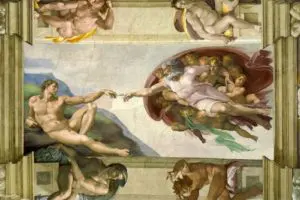
Adam on the left, God the Father on the right
Islam, which was also a movement to return to the origins of Semitic monotheism
Now, let us turn to Islam.
Islam severely condemns polytheism as “the greatest of sins.
For those who are not familiar with Islam, it is difficult to understand why Islam considers polytheism to be such a great sin, but the reason is that polytheism is at the root of idolatry, which is in great conflict with the fundamentals of the faith.
Islam is a religion founded by its founder, Muhammad, who claimed to “return to the origins of the religion of Abraham.
Hence, they are much stricter in their principles than Judaism and Christianity. It also tends to make the most logical sense of the three religions.
To begin with, the word Islam itself means “absolute submission to Allah, the only God.
The word “Muslim” is an Arabic word meaning “absolutely obedient.
As the word “absolute” suggests, this is still a “God-centered worldview.
Polytheism inevitably tends to drift toward an “ego-centered worldview” in which God is there for one’s own benefit. And there is a tendency to start carving idols, such as statues of gods.
Hence, from the perspective of monotheism, idolatry is as follows.
- Worshiping something that is not God as God.
- Something made by human hands cannot be God.
- It is rebellion against the one and only God.
All who make idols are nothing,
and the things they treasure are worthless.
Those who would speak up for them are blind;
they are ignorant, to their own shame.
Who shapes a god and casts an idol,
which can profit nothing?
People who do that will be put to shame;
such craftsmen are only human beings.
Let them all come together and take their stand;
they will be brought down to terror and shame.( Isaiah 44:9-11.)
Even idolatry, while of course better than atheism, is far from being an essential form of faith, and therefore not an inherently happy path.
The ego is always shaky, and as long as it is centered on that shaky thing, it is safe to say that we will never find peace of mind.
From the perspective of Islam, which is truly “fundamentalist” in the sense of “return to the religion of Abraham,” idolatry is considered “an act of defiance and hostility to the One God.
In essence, God is an invisible being far beyond human imagination and perception, and making this invisible being visible in the form of an idol is considered to be an act of apostasy.
The root of the problem is whether the worldview is “ego-centered” or “God-centered
At the root of idolatry is the human-centered worldview of “God for man,” or in our (Neo Buddhism) terminology, the ego-centered worldview.
And an ego-centered worldview is not the way to happiness for the evolved human being who has “learned loneliness and begun the inner exploration of the mind” in an urban way.
This is because human beings and the ego are really unstable (as you experience on a daily basis) and are not as dependable as a “center,” or principle.
Therefore, it is necessary to have a firm “principle” at the center, one that is not in flux. In the context of religion, this would be “absolute God.

Because it is a principle, it must be “one”. If there is more than one truth, “this is the truth and that is the truth,” one would be in a dizzy state again. Therefore, the Absolute God must be “the only God” at the same time.
The merkmal to move away from an ego-centered worldview to a God-centered worldview is expressed in the codes of “no idol-making” and “no idolatry.
It is precisely because of this fundamental worldview of “whether or not it is true” and “whether or not it deserves a true theory of happiness,” that Semitic monotheism, especially Islam, which claims to return to its origins in the “religion of Abraham,” has a strict prohibition of idolatry.
However, looking at it the other way around, the prohibition of idolatry is only one merkmal, and is not inherently problematic in and of itself. Islam misses that point.
It is really OK to make a statue of God as long as the “symbol” is directly related to the Absolute God or to the “truth” or “principle” at large.
In the ancient Orient, there were so many examples of “ego-centered worldviews” that were directly related to idol-making, that they were just summarized in the code “Stop idolatry” for people to easily understand.
Therefore, we must extort the “root” of the problem.
Furthermore, there is the fact that even the Absolute and One God can be manifested in a variety of ways depending on the time period, region, and ethnicity, in short, TPO.
Sometimes it is in the form of Buddhism, other times it is in the form of Greek philosophy or Confucianism …….
That is, the Absolute God, the One God, when translated into earthly form, can appear to be “polytheistic” in expression. This is also true.
Therefore, the important order of recognition is to first gain peace of mind by recognizing the absolute God (absolute truth) as the principle, and then, for the sake of tolerance toward others, to recognize “polytheism,” that is, “God can appear in diversity even though there is only one God.
Then, we should also recognize statues of gods and Buddha as “symbols of absolute truth.
Once we go to the One, we recognize the Many as expression. The many is encompassed within the one.
In other words, one equals many and many equals one.
This perspective can serve as the “core” for providing an ideological foundation for the coexistence and co-prosperity of Islam (Semitic monotheism) and other religions such as Buddhism and Confucianism (or even the philosophy of truth such as Greek philosophy). This is how we see it in Neo Buddhism.
First of all, we must obtain an unshakable axis of the One Absolute, a “divine reality-centered worldview. By doing this, the modern person who is independent as an individual (or isolated in another sense) can also attain peace of mind.
I would also like to suggest to the Islamic side to understand that the prohibition of idolatry was only a warning against the “ego-centric worldview” of the ancient Orient.
There is nothing wrong with statues of gods and Buddha. Rather, they sometimes function as “symbols” for absolute truth.
For example, a more fundamental interpretation is that Buddhism is also a true religion, in which one remembers the Buddha and his Dharma through a statue of the Buddha.

First, we awaken to a worldview centered on divine reality, and then the next order of recognition is that “divine beings may manifest themselves in various polytheistic ways according to TPO.
First, you go to one, then you come back to many.
One equals many and many equals one.
This will be the way for religions to be in harmony with each other as well as the acquisition of a true worldview.
invisible idolatry
The Old Testament (Hebrew Bible) does not limit idolatry to literal, visible idols.
Of course, idols are, in the first sense, carved and visible images, but it seems that the problem goes beyond that and includes the various desires that humans create.
The religious reformer Jean Calvin said, “The human mind is really a factory that produces idols.
The following verse is also found in the Qur’an.
Have you seen the one who takes as his god his own desire? Then would you be responsible for him? (The Qur’an, 25:43.)
The English empiricist philosopher Francis Bacon also advocated the theory of idola, the “four idols” that prevent true human perception. Idola is the word from which the word idol was derived.
Thus, it is important to understand “idolatry” as a more internalized form of “idolatry,” not as an outwardly visible idol, but as something that misleads our true perception and worldview.
In this sense, it can be said that focusing on the superficial differences and dedicating one’s ideology and beliefs to the elimination of other religions is indeed “idolatry”.

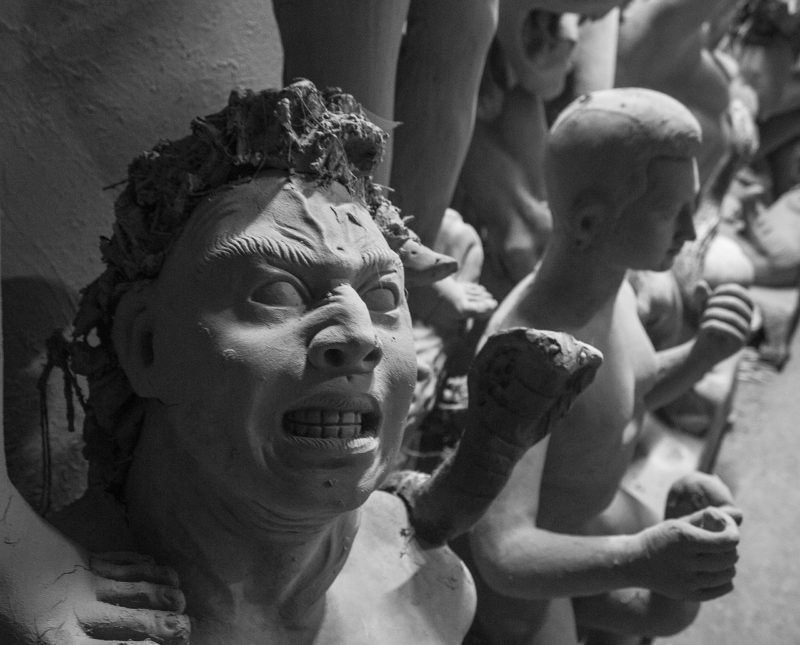


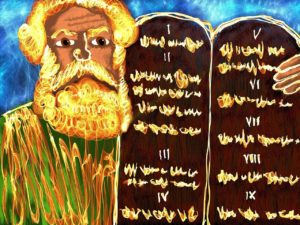



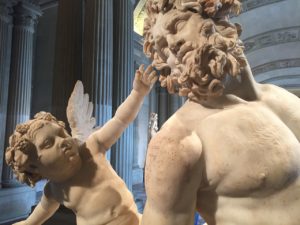

Comments